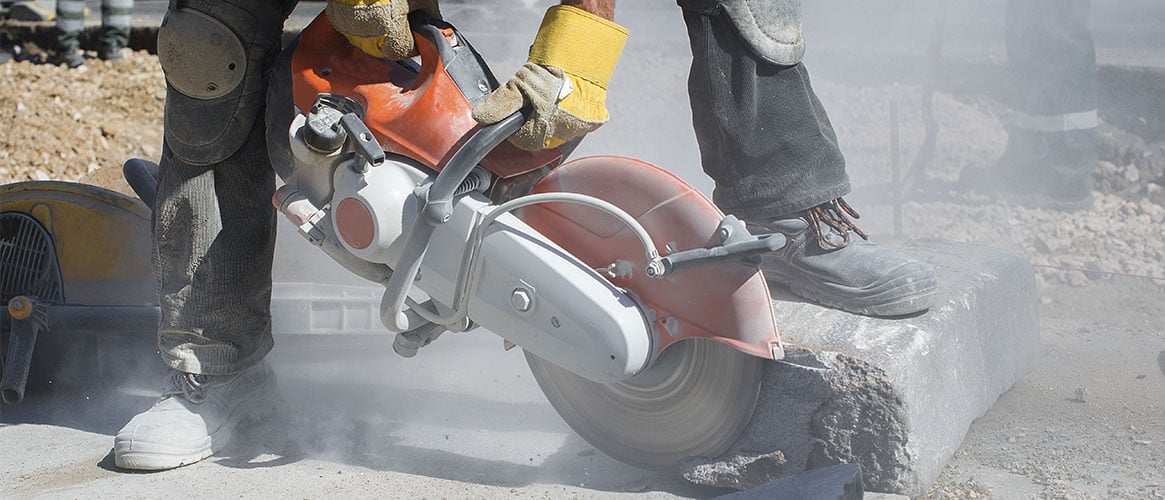More than 2 million workers are exposed to crystalline silica every year in the United States. When inhaled, very small particles of silica dust travel deep into the lungs and become trapped there, causing chronic inflammation and scar tissue. This condition is called silicosis, which reduces lung function and makes it hard for the body to get oxygen. Symptoms include cough, fatigue, chest pain, and shortness of breath.
There is no cure for silicosis and the disease is debilitating – causes weakness, pain, and limits life activities; progressive – continues to cause lung damage and gets worse over time; and deadly. Exposed workers are also at risk of lung cancer, chronic obstructive pulmonary disease (COPD), kidney disease, tuberculosis infection, and autoimmune diseases such as rheumatoid arthritis, systemic lupus erythematosus, and systemic sclerosis.
The three types of silicosis
Development of silicosis depends on many factors such as the amount of crystalline silica in the dust inhaled, the size of the particles, and the length of exposure.
- Chronic – Usually occurs after 10 or more years of exposure to crystalline silica at moderate to low concentrations. Symptoms include shortness of breath, wheezing, and decreased lung function. Chronic is the most common type of silicosis.
- Accelerated – Results from exposure to high concentrations of crystalline silica over 1-10 years. Symptoms are similar to chronic but occur more rapidly.
- Acute – Occurs after exposure to extremely high concentrations of silica over as short as a few weeks to months. Symptoms include cough, fatigue, chest pain, and low blood oxygen levels. Acute silicosis progresses rapidly and can be fatal within months.
All types of silicosis are incurable and potentially fatal.
What is crystalline silica?
Crystalline silica (also referred to as silica) is an abundant, naturally occurring mineral, most commonly found as quartz. It is hard, chemically inert, and has a high melting point, making it useful for many applications.
Many common construction materials contain crystalline silica. These include stone, brick, concrete, sand, ceramic roof tile, joint compound, and some countertops. The amount of crystalline silica in these products varies greatly, up to over 90 percent in engineered stone.
When can you be exposed to silica?
Exposure can occur when working with materials that contain silica. These include stone and engineered stone, cultured stone, asphalt, brick, cement, concrete, sand, roof tile, and soil. Exposure can occur when these materials are disturbed such as during cutting, grinding, crushing, drilling, and polishing. Those working in the stone countertop fabrication and construction industries are most at risk. Other industries where workers are at risk of silica exposure include:
- Stone cutting
- Foundry operations
- Abrasive blasting
- Oil and gas extraction
- Glass manufacturing
- Stone and cement crushing
- Demolition
- Mining
How can you prevent silicosis?
Workers can be protected from silicosis by controlling their exposure to silica-containing dust. Eliminate or reduce exposure using the hierarchy of controls: elimination/substitution, engineering controls, work practices and procedures, and lastly personal protective equipment (PPE).
- Choose materials that don't contain silica, if available (check with the manufacturer or review the product’s safety data sheet).
- Use tools with integrated water or ventilation systems to control dust at the source.
- Follow Table 1 of Cal/OSHA’s regulation for the construction industry.
- Practice good housekeeping using wet methods or a HEPA-filtered vacuum.
- Do not allow the use of compressed air for cleaning.
- Use PPE such as coveralls to keep dust off street clothes.
- Train employees on health effects of silica and how to reduce exposure.
- Wear a properly fitted particulate respirator like an N95.
Silicosis is preventable. Simply stated by Tom Ward, whose father was diagnosed with silicosis when Tom was eight years old and died five years later: “Turn the water on. Turn the vac on.”
Protect your employees by reducing their exposure to silica. Find out more in our Safety Meeting Topic: Working with Silica.
